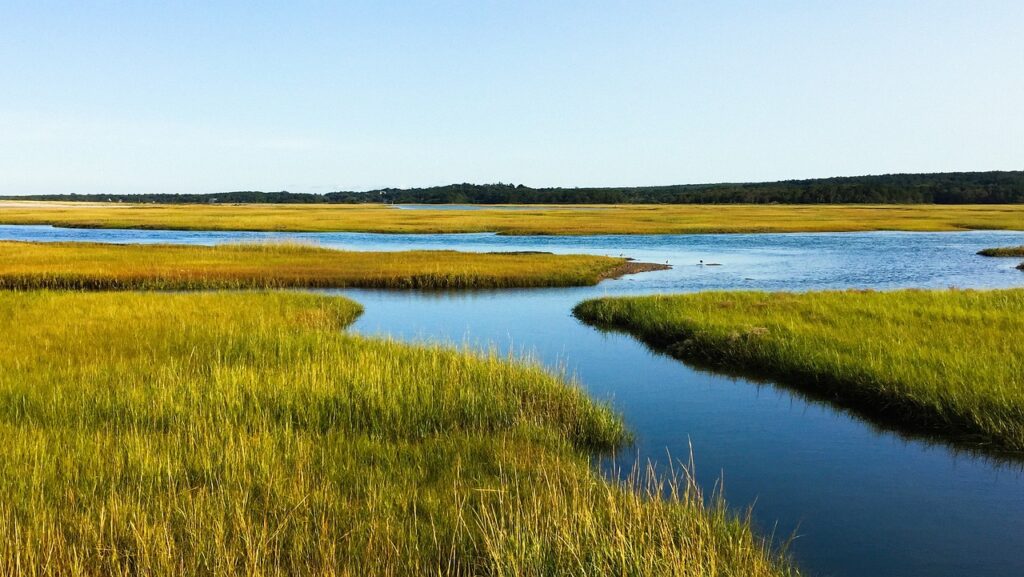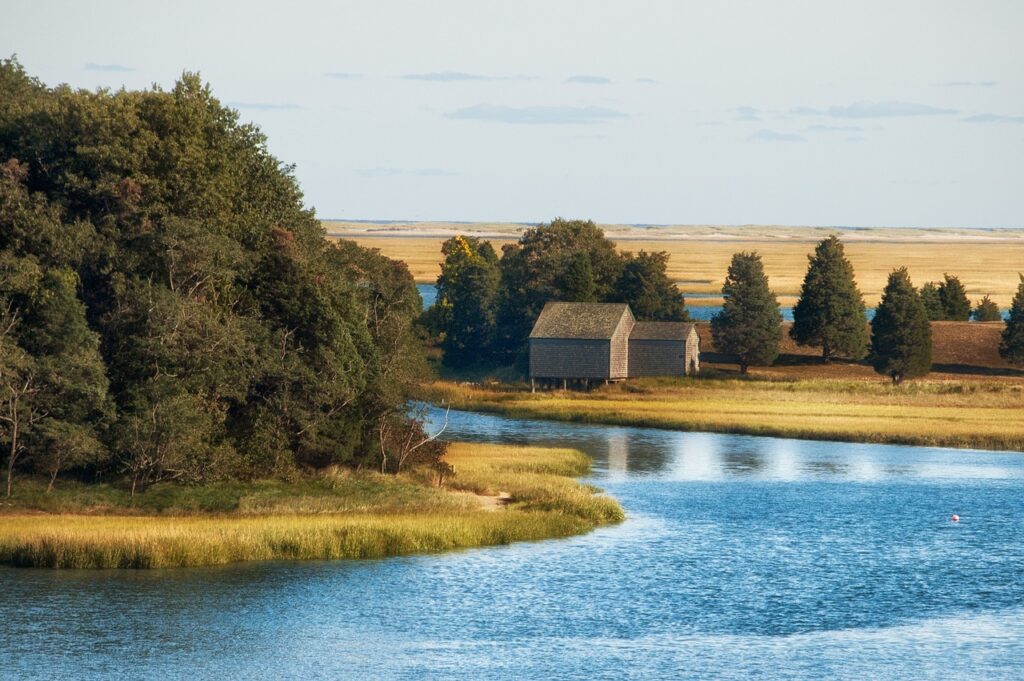PAST PROJECT:
Make Way for Salt Marshes
Funding from a real estate transfer tax can relocate homes before they are impacted by rising salt marshes, thus creating benefits for homeowners, bays and the people and wildlife that depend on them.

Our Partners:
Our Problem:
Homes need to be removed from the path of salt marshes that are migrating inland with sea level rise…but the strategy must be voluntary, acceptable to both property owners and tax payers, and be affordable.
Our Solution:
A zoning overlay will grant a right of first refusal to the local town to purchase homes in the path of future salt marshes, but only when the owner intends to sell anyway. Funded by the Land Bank (whose income is from a tax on the sale of properties), there is no cost to the town tax payer.
Read More:
Sengekontacket is one of the many “salt ponds” on Martha’s Vineyard, traditional sources of the iconic bay scallop and nursery to many species of commercially and recreationally valuable fish. However, these brackish ponds are particularly vulnerable to excess nitrogen from septic systems, lawns and residential development. Salt marshes act as a sponge, intercepting much of the excess nitrogen in the ground water before it enters the ponds. The problem is that as sea levels rise, salt marshes migrate inland and threaten to intersect directly with septic systems and lawns, thus eliminating their filtering capacity, while also threatening basements and the houses themselves.

Removing houses from the path of sea level rise is a common problem in many coastal communities, but the cost of so-called “buy-outs” can be astronomical, even if doing so repays the taxpayers in ecosystem services in the long run (or is less expensive than the clean-up after storm surge). Moreover, local voters often object to taking private property by eminent domain, even when doing so benefits the entire community; it is a political “third rail” for many town selectmen and managers. Another significant barrier to buy-outs is that many of the most vulnerable homes are also the most valuable ones, being largely waterfront. The fear among some voters and municipal officials is that the loss of these homes means the loss of tax revenue. The fear among some in the real estate business is that houses removed from vulnerable areas are also properties removed from the market.
The Vineyard is fortunate as being one of the communities with a land bank, which collects 2% tax from the transfer of real estate, collected from buyers who already have a first home. That is, there is no tax imposed on residents. In a concept developed with multiple citizens, the solution emerged to impose a zoning overlay over those properties clearly destined to be intercepted by rising salt marshes. If removed, these houses would protect one of the Island’s most cherished salt ponds, Sengekontacket. This zoning overlay would grant the town a right of first refusal on any property, but only when the threatened property owners voluntarily decided to sell anyway. This approach eliminates the objection towards eminent domain, and alleviates the concern over loss of real estate profits and tax revenues, because the sellers would be, by definition, exercising their rights to sell anyway. The concept is going through the public review and public process. However, the first hurdle was to develop a highly credible and transparent process for identifying threatened properties. And for that, Village and Wilderness provided the funds to the Martha’s Vineyard Commission to contract with Dr. Rob Young, who had developed a much improved method for projecting future salt marsh locations.

